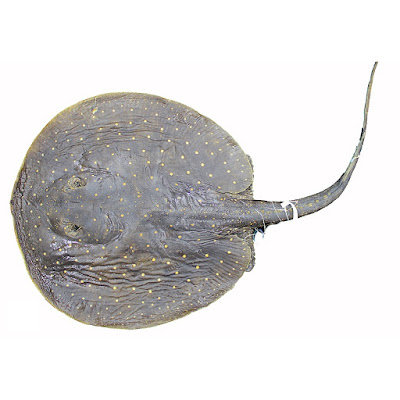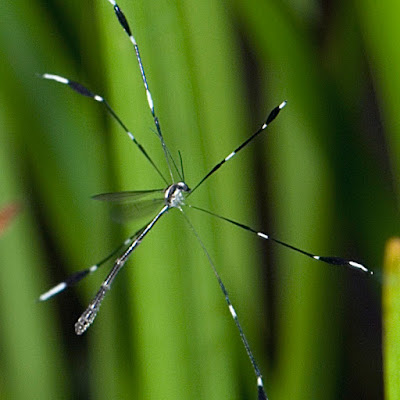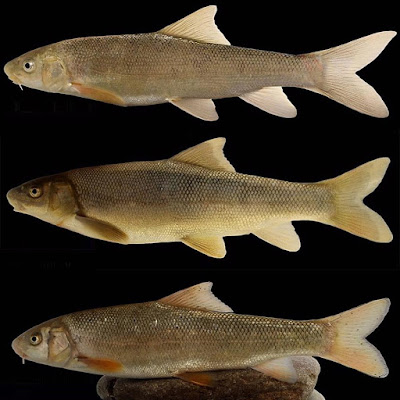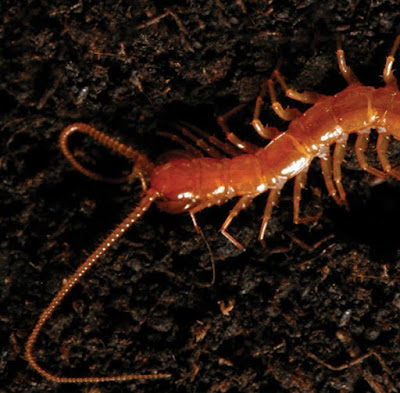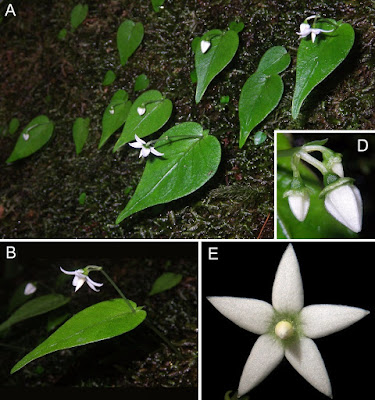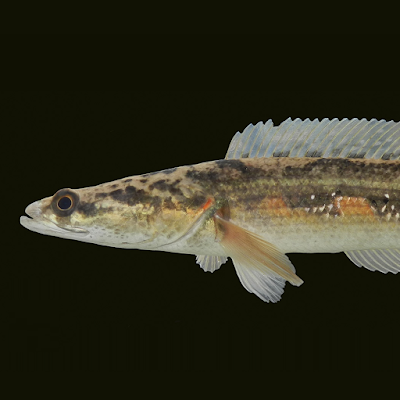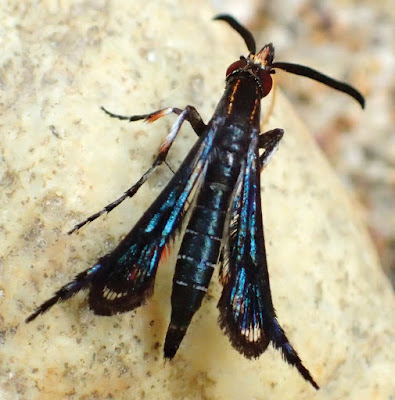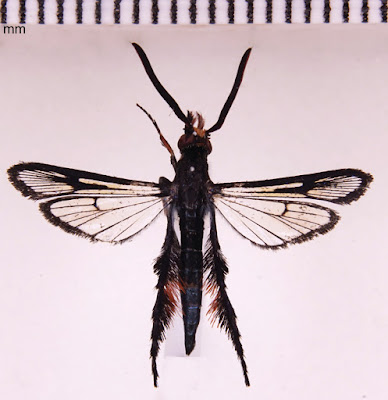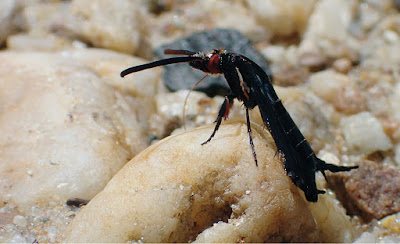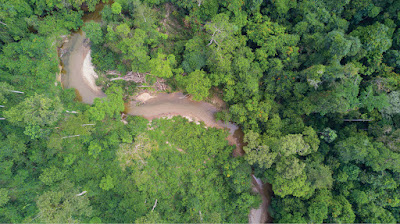[Most Recent Entries] [Calendar View]
Monday, August 21st, 2017
| Time | Event | ||||||
| 2:38a | [Ichthyology • 2017] Systematic Revision of the Potamotrygon scobina Garman, 1913 Species-complex (Myliobatiformes: Potamotrygonidae), with the Description of Three New Freshwater Stingray Species from Brazil and Comments on Their Distribution and Biogeog
Abstract Potamotrygon scobina Garman, 1913, described from Cametá, rio Tocantins, lower Amazon basin, is taxonomically reviewed through an extensive morphological study of internal and external features. Specimens identified as P. scobina from different locations of the Amazon basin were also studied. The identity of P. scobina, its morphology, and distribution are redefined. In addition, three new species closely related to P. scobina are described from Brazil: Potamotrygon adamastor, sp. nov., from rio Uraricoera, rio Branco system, upper Amazon basin; Potamotrygon amazona, sp. nov., from rio Juruá, upper Amazon basin; and Potamotrygon garmani, sp. nov., from the mid to upper rio Tocantins. These three new species do not occur sympatrically with P. scobina, as far as known. Together with P. scobina and P. limai Fontenelle, Silva & Carvalho, 2014, the new species have three angular cartilages of different sizes, a condition not seen in any other potamotrygonin (which have either one or two angulars). Diagnostic characters in combination are primarily morphometric proportions, especially tail length and width, dermal denticles and tail thorns (their relative size, number, morphology, and distribution), tooth size and number of rows, and color pattern. Keywords: Pisces, taxonomy, Neotropics, angular cartilages, Potamotrygon garmani sp. nov., Potamotrygon amazona sp. nov., Potamotrygon adamastor sp. nov.
João Pedro Fontenelle and Marcelo R. de Carvalho. 2017. Systematic Revision of the Potamotrygon scobina Garman, 1913 Species-complex (Chondrichthyes: Myliobatiformes: Potamotrygonidae), with the Description of Three New Freshwater Stingray Species from Brazil and Comments on Their Distribution and Biogeography. Zootaxa. 4310(1); 1–63. DOI: 10.11646/zootaxa.4310.1.1 | ||||||
| 2:53a | [Entomology • 2017] A Revision of Bittacomorphinae (Diptera) with A Review of the Monophyly of Extant Subfamilies of Ptychopteridae
Abstract The phylogenetic relationship between the two extant subfamilies of Ptychopteridae is examined using morphological characters. Bittacomorphinae is supported as a monophyletic group with several synapomorphies. Monophyly of the Ptychopterinae is less certain. Descriptions are provided for the family and subfamilies. The genera and species of Bittacomorphinae are reviewed, and phylogenetic relationships within the subfamily are discussed. While Bittacomorpha is a monophyletic group, Bittacomorphella is probably paraphyletic. Redescriptions of the species of Bittacomorpha and most of Bittacomorphella are presented. Bittacomorphella furcata sp. nov., is described from the central Coast Range of Oregon and Olympic Peninsula of Washington, USA. The range of Bittacomorphinae is found to extend into the Neotropical region with a record of Bittacomorpha clavipes from Costa Rica. A key to the world species of Bittacomorphinae is provided. Keywords: Diptera, Bittacomorpha, Bittacomorphella, phylogeny, morphology, natural history Andrew Fasbender and Gregory W. Courtney. 2017. A Revision of Bittacomorphinae with A Review of the Monophyly of Extant Subfamilies of Ptychopteridae (Diptera). Zootaxa. 4309(1); 1–69. DOI: 10.11646/zootaxa.4309.1.1 | ||||||
| 7:47a | [Ichthyology • 2017] Three New Species of Algae-scraping Cyprinid Genus Capoeta (Teleostei: Cyprinidae) from Tigris River Drainage in Iran
Abstract Traditionally small-scale populations of Capoeta in the Tigris River drainage are identified as Capoeta damascina. The recent finding revealed that some populations of small-scaled C. damascina species group are not identified as any described species. We examined these populations and the results showed that there are pronounced differences between them in morphological and molecular characters. Therefore based on differences found, here we describe three new small-scaled Capoeta species from Zohreh, Tireh and Gamasiab Rivers, Tigris River drainage, Iran. Keywords: Biodiversity, Cyprinid, Freshwater fish species, Iran, Taxonomy. Capoeta ferdowsii, new species Distribution: Capoeta ferdowsii is known from the Zohreh and Fahlian Rivers in Tigris river drainage (Fig. 7). Etymology: The species is named to honor of Abu Al-Qasim Ferdowsi Tusi (Persian: وسمس ابوالقاسمفردوسیسمسر (a Persian poet and the author of Shahnameh book which is the world's longest epic poem created by a single poet, and the national epic of Greater Iran. Capoeta pyragyi, new species Distribution: Capoeta pyragyi is known from the Tireh and Sezar Rivers (Fig. 13). Etymology: The species is named to honor of Magtymguly Pyragy (Persian: دواغس مختومقلس (a Turkmen spiritual leader and philosophical poet. Capoeta shajariani, new species Distribution: Capoeta shajariani is known from the Gamasiab (Fig. 20), Dinevar, Qarasu, Khoram (Khoram Abad), Aran and Sarab-e Maran Rivers in the Tigris River drainage. Etymology: The species is named to honor of Mohammad-Reza Shajarian, an acclaimed Iranian classical singer, composer and master of Persian traditional music. Arash Jouladeh-Roudbar, Soheil Eagderi, Leidys Murillo-Ramos, Hamid Reza Ghanavi and Ignacio Doadrio. 2017. Three New Species of Algae-scraping Cyprinid from Tigris River Drainage in Iran (Teleostei: Cyprinidae). FishTaxa. 2(3); 134-155. FishTaxa.com/index.php/ft/article/view/2-3-4 | ||||||
| 10:47a | [Invertebrate • 2017] Eupolybothrus liburnicus • A New Cave Centipede (Chilopoda, Lithobiomorpha, Lithobiidae) from Croatia with Notes on the Subgenus Schizopolybothrus Verhoeff, 1934
Abstract A new species of Eupolybothrus Verhoeff, 1907 discovered in caves of Velebit Mountain in Croatia is described. Eupolybothrus liburnicus sp. n. exhibits a few morphological differences from its most similar congeners, all of which are attributed to the subgenus Schizopolybothrus Verhoeff, 1934, and two approaches to species delimitation using the COI barcode region identify it as distinct from the closely allied E. cavernicolus Stoev & Komerički, 2013. E. spiniger (Latzel, 1888) is redescribed and a lectotype is designated for it as well as E. caesar (Verhoeff, 1899) to stabilize their respective taxonomic status. The subspecies E. acherontis wardaranus Verhoeff, 1937, previously suspected to be a synonym of E. caesar (Verhoeff, 1899), is redescribed and its taxonomy revised after the study of type material whereas the identity of E. acherontis (Verhoeff, 1900) described from a female from southwest Trebinje (Bosnia and Herzegovina) remains unknown. Type material of E. stygis (Folkmanova, 1940) is confirmed to be lost and future designation of neotypes from topotypic specimens is necessary to stabilize its taxonomy. The importance of setal arrangement on the intermediate and 14th tergites and the sexual modifications on the male 15th prefemur for species identification is discussed in the light of present findings, and a review of the species of E. (Schizopolybothrus) that display these traits is also provided. Keywords: Biospeleology, COI barcoding, Eupolybothrus, new species, SEM, Velebit Mountain Order Lithobiomorpha Pocock, 1895 Family Lithobiidae Newport, 1844 Subfamily Ethopolyinae Chamberlin, 1915 Genus Eupolybothrus Verhoeff, 1907 Eupolybothrus liburnicus sp. n. Diagnosis: A species morphologically similar to Eupolybothrus cavernicolus, genetically differing from it by 11% interspecific distance based on COI, and morphologically differing by the slightly convex posterior margin of T14, presence of 15CxVp and 15PDp spines, and by the leg 15 to body length ratio of ca. 64% in the adult male.
Etymology: Liburnicus denotes „of Liburnia“, a district in the coastal region of the northeastern Adriatic; adjective. Habitat: Eupolybothrus liburnicus sp. n. is here recorded from five caves of the Velebit Mountain, Croatia. Four of these (Plitka peć, Skorupuša, Rašljekovac and Bundalova pećina) are situated in the area where the southern slopes of the Crnopac Massif meet the Krupa River canyon while one of them, Markova špilja, is a small anchialine cave situated a few hundred meters from the Adriatic coast near the village of Seline. Nesrine Akkari, Ana Komerički, Alexander M. Weigand, Gregory D. Edgecombe and Pavel Stoev. 2017. A New Cave Centipede from Croatia, Eupolybothrus liburnicus sp. n., with Notes on the Subgenus Schizopolybothrus Verhoeff, 1934 (Chilopoda, Lithobiomorpha, Lithobiidae). ZooKeys. 687; 11-43. DOI: 10.3897/zookeys.687.13844 | ||||||
| 10:55a | [Botany • 2017] Argostemma cordatum • A New Species (Rubiaceae) from southern Vietnam
Abstract Argostemma cordatum, a new species of Rubiaceae, is described and illustrated. The species was discovered in 2014 during a botanical survey of the Chu Yang Sin National Park (Dak Lak province, Southern Vietnam). Argostemma cordatum possesses a solitary large leaf per plant (along with one very small leaf). The new species differs from morphologically similar species mainly by the small size of the enlarged leaf and cordate base of the enlarged leaf. It is also characterized by the following features: plant completely glabrous, stipules minute and reduced to papillate warts, inflorescence with all axes elongated, anthers coherent into anther cone and dehiscent by longitudinal slits, style slightly exserted. An extended description of the vegetation in the area inhabited by A. cordatum is provided. Keywords: Argostemma, taxonomy, Southern Vietnam, Chu Yang Sin National Park, flora, biodiversity, Eudicots Argostemma cordatum Nuraliev, sp. nov. Etymology:— The specific epithet “cordatum” refers to the prominently cordate base of large leaf which distinguishes the new species from its relatives. Maxim S. Nuraliev, Anton S. Beer, Andrey N. Kuznetsov and Svetlana P. Kuznetsova. 2017. Argostemma cordatum (Rubiaceae), A New Species from Vietnam. Phytotaxa. 317(1); 42–52. DOI: 10.11646/phytotaxa.317.1.4 | ||||||
| 2:19p | [Ichthyology • 2017] Channa pseudomarulius • A Valid Species of Snakehead from the Western Ghats region of Peninsular India (Teleostei: Channidae), with Comments on Ophicephalus grandinosus, O. theophrasti and O. leucopunctatus
Abstract An investigation integrating morphological and molecular data to address the taxonomic status of Indian Channa marulius-like fishes reveals the presence of two species within Indian Rivers. As a consequence, Channa pseudomarulius is resurrected as a valid species and removed from the synonymy of C. marulius. Channa pseudomarulius appears to be restricted to the southern Western Ghats region of peninsular India and can be distinguished from the more widespread C. marulius by fewer lateral-line scales, fewer dorsal- and anal-fin rays, fewer vertebrae, and by a difference of about 8% in mitochondrial cytochrome c oxidase subunit 1 gene sequences. Channa marulius and C. pseudomarulius both possess low levels of genetic diversity across their range suggestive of small historical population sizes. This is especially interesting in the case of C. marulius, which is shown to have a large natural geographical range spanning at least the Indian subcontinent and parts of the Indo-Burman ranges in westernmost Myanmar. The synonymy of Channa marulius with Ophicephalus grandinosus, O. theophrasti, and O. leucopunctatus is confirmed based on examination of type specimens. A lectotype is designated for O. grandinosus. Keywords: Pisces, CO1, DNA barcoding, Integrative taxonomy, Kerala, Morphometry Ralf Britz, Eleanor Adamson, Rajeev Raghavan, Anvar Ali and Neelesh Dahanukar. 2017. Channa pseudomarulius, A Valid Species of Snakehead from the Western Ghats region of Peninsular India (Teleostei: Channidae), with Comments on Ophicephalus grandinosus, O. theophrasti and O. leucopunctatus. Zootaxa. 4299(4); 529–545. DOI: 10.11646/zootaxa.4299.4.4 | ||||||
| 3:01p | [Entomology • 2017] Pyrophleps ellawi • A New Species of Wasp-mimicking Clearwing Moth (Lepidoptera, Sesiidae) from Peninsular Malaysia with DNA Barcode and Behavioural Notes Abstract A new species of clearwing moth, Pyrophleps ellawi Skowron Volponi, sp. n., is described from Peninsular Malaysia. Information on the habitat, time and conditions of occurrence, flight and mud-puddling behaviour, functional morphology, and DNA barcode are also provided. Photographs and a supplementary video from the wild demonstrate the postures and behaviour of this species of Pyrophleps, whose remaining members were described only on the basis of pinned specimens. This is the first record of this genus in Peninsular Malaysia. Keywords: Sesiidae, clearwing moth, Pyrophleps ellawi, mimicry, mud-puddling, behaviour, Malaysia
Diagnosis: The new species is superficially most similar to Pyrophleps vitripennis, from which it can easily be distinguished by the configuration of male genitalia (compare Fig. 4 herein with Arita and Gorbunov 2000, fig. 6), presence of hair-like scales on labial palpi (smoothly scaled in species compared), presence of orange hair-like scales on fore- and mid tibiae and lack of orange scales on wings, broader external transparent area of forewing. Apart from morphological features, P. ellawi shows 8% COI sequence divergence from P. vitripennis (Table 1). Based on genitalia configuration, this species is most similar to P. nigripennis. However, it differs in the shape of the valva and gnathos. Besides that, it can immediately be distinguished by the well-developed transparent areas of forewing (compare Fig. 3 herein with Arita and Gorbunov 2000, fig. 8), narrow discal spot on hindwing and by the colouration of the hind leg tuft (extensive red both externally, on tibia, and internally, on tibiae and tarsi, in P. nigripennis). From P. ruficrista it differs in more developed forewing ATA and PTA and less developed ETA and in the hind leg tuft (cinnabar red with two black spots and patches of blue scales in P. ruficrista). From P. cruentata, P. haematochrodes , P. cucphuonganae and P. bicella, it can be distinguished by the entirely transparent hindwings and absence of red scales on wings and abdomen.
Etymology: The species is named after our dear friend El Law, a dedicated conservation activist with sincere sensibility for Malaysian nature who, over the years of our studies on Malaysian Sesiidae, offered us his help in countless aspects. Distribution and habitat: In addition to the type locality, the species is known also from the Taman Negara National Park, Malaysia, where it was observed and filmed in two locations approx. 50 km from each other. All observations were done on sandy and pebble river banks exposed to sunlight, in a lowland dipterocarp forest (Fig. 5)
Conclusion: The new wasp-mimicking species of Sesiidae, Pyrophleps ellawi, represents the first record of the genus Pyrophleps in Peninsular Malaysia and the first filmed in the wild. The video realized in its habitat provided valuable information on its authentic habitus, functional morphology, and behaviour. Marta Skowron Volponi and Paolo Volponi. 2017. A New Species of Wasp-mimicking Clearwing Moth from Peninsular Malaysia with DNA Barcode and Behavioural Notes (Lepidoptera, Sesiidae). ZooKeys. 692: 129-139. DOI: 10.3897/zookeys.692.13587 |
| << Previous Day |
2017/08/21 [Calendar] |
Next Day >> |
